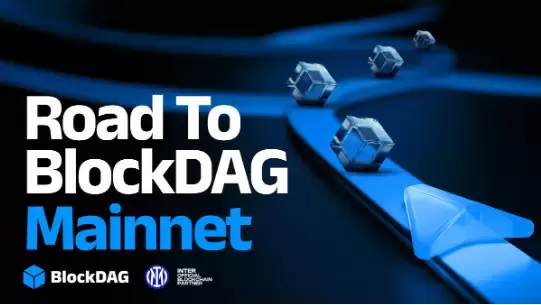 |
|
 |
|
 |
|
 |
|
 |
|
 |
|
 |
|
 |
|
 |
|
 |
|
 |
|
 |
|
 |
|
 |
|
 |
|
Cryptocurrency News Articles
Tether CEO Paolo Ardoino Completes Visit to the United States, Meeting with Lawmakers in Washington, D.C. to Discuss Stablecoin Regulation
Apr 15, 2025 at 05:00 am
His visit comes as the U.S. Congress moves closer to introducing legislation regulating stablecoins, which Ardoino believes is necessary for financial inclusion and preserving U.S. dollar dominance.

In a recent interview, Paolo Ardoino, CEO of Tether, discussed his experience meeting with U.S. lawmakers in Washington, D.C. to discuss stablecoin regulation and the broader role of digital currencies in the global economy.
Ardoino's visit follows U.S. Congress's progress toward introducing legislation for regulating stablecoins, which he believes is crucial for financial inclusion and maintaining the U.S. dollar's dominant role.
“I think it’s important to have U.S. legislation on stablecoins,” Ardoino stated.
Ardoino's trip marked his first time in the U.S. and comes as stablecoins are increasingly recognized for their key use case in blockchain technology. Following his meetings, Ardoino described positive experiences, noting that U.S. lawmakers showed interest in stablecoins' role outside the U.S., especially in regions with unstable local currencies.
“We saw that there was an openness and a willingness to understand how stablecoins are used in emerging markets, which is something that was brought up in the interview. I think it’s important for U.S. lawmakers to realize that stablecoins are not just used by people in New York or San Francisco for convenience. They are used in countries like Turkey, Argentina, and Lebanon, where people face serious economic challenges.”
Ardoino explained that while stablecoins may be seen as a convenience within the U.S., their impact is far greater in emerging markets. Countries like Turkey and Argentina, persistently dealing with currency depreciation, heavily rely on stablecoins such as Tether’s USDT to access stable forms of money.
“We have over 400 million users globally, and we have physical distribution points for Tether in Africa and Latin America to meet the demand. People are coming to collect USDT in cash at these points. In essence, stablecoins are extending the U.S. dollar's reach, allowing millions without access to reliable banking systems to store value and transact in dollars.”
According to Ardoino, U.S. lawmakers appreciated this contribution, recognizing the importance of stablecoins in maintaining U.S. dollar hegemony in global markets.
However, despite the positive reception, Ardoino expressed concerns over how U.S. stablecoin regulation might unfold. He referenced the European Union's MiCA regulation, which has already led to operational challenges for Tether in Europe.
These included restrictions requiring stablecoin issuers to hold reserves in European banks, which Ardoino argued could expose funds to additional risk.
“We believe that U.S. lawmakers should take a different approach and avoid replicating the EU's mistakes. We hope they will consider the broader implications of their decisions and prioritize fostering innovation in the cryptocurrency sector.”
Draft stablecoin bills in the U.S. have proposed measures that could limit issuance rights to banks or highly regulated financial institutions. Ardoino believes such restrictions contradict America's tradition of encouraging competition and innovation.
“We are indifferent to the structure of U.S. stablecoin regulation, as long as it encourages competition and allows for the best technology to flourish. We are prepared to launch a U.S.-specific stablecoin if regulations require it.”
This version would target institutional users and payment applications, differing from USDT's role in emerging markets, where it's often used as a savings tool.
Finally, Ardoino touched upon Tether's role in U.S. Treasury markets and its future plans.
As one of the world's largest cryptocurrency firms, Tether has emerged as a major participant in U.S. Treasury markets. Ardoino revealed that the company was the seventh-largest purchaser of U.S. Treasuries in 2024.
Excluding jurisdictions that aggregate Treasury holdings for hedge funds, such as the Cayman Islands and Luxembourg, Tether would rank among the top five buyers globally.
Ardoino opined that this kind of distributed Treasury ownership adds strength to the debt markets of the United States.
“Holders of USDT assets can be any person from any part of the globe; and this means that the plight of one large-scale holder to sell all his assets and disappearing cannot affect the overall market, unlike the case with centrally located foreign government deposits.”
He also disclosed that Tether currently holds $144 billion in issued tokens, supported by $164 billion in assets, including $7 billion in excess reserves. The company maintains these reserves primarily in U.S. Treasuries and cash equivalents, with funds custodied in the United States.
Looking ahead, Ardoino expects stablecoin adoption to accelerate due to geopolitical shifts and technological changes. He suggested that future artificial intelligence and robotics developments could lead to automated systems transacting using stablecoins.
These transactions could multiply as machine-to-machine communication increases globally, further boosting the role of stablecoins in the evolving global financial landscape.
Furthermore, Tether continues to
Disclaimer:info@kdj.com
The information provided is not trading advice. kdj.com does not assume any responsibility for any investments made based on the information provided in this article. Cryptocurrencies are highly volatile and it is highly recommended that you invest with caution after thorough research!
If you believe that the content used on this website infringes your copyright, please contact us immediately (info@kdj.com) and we will delete it promptly.




























































